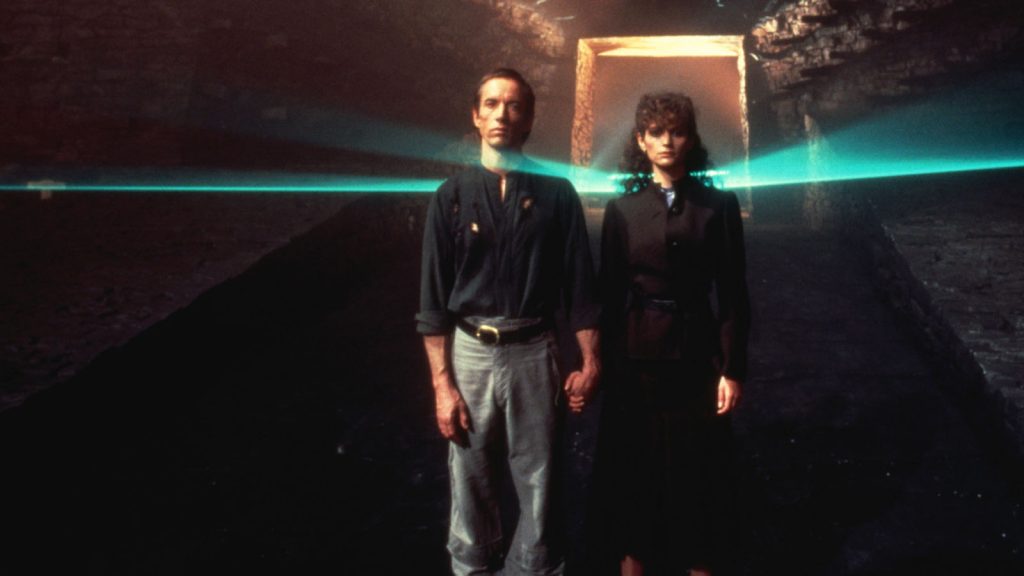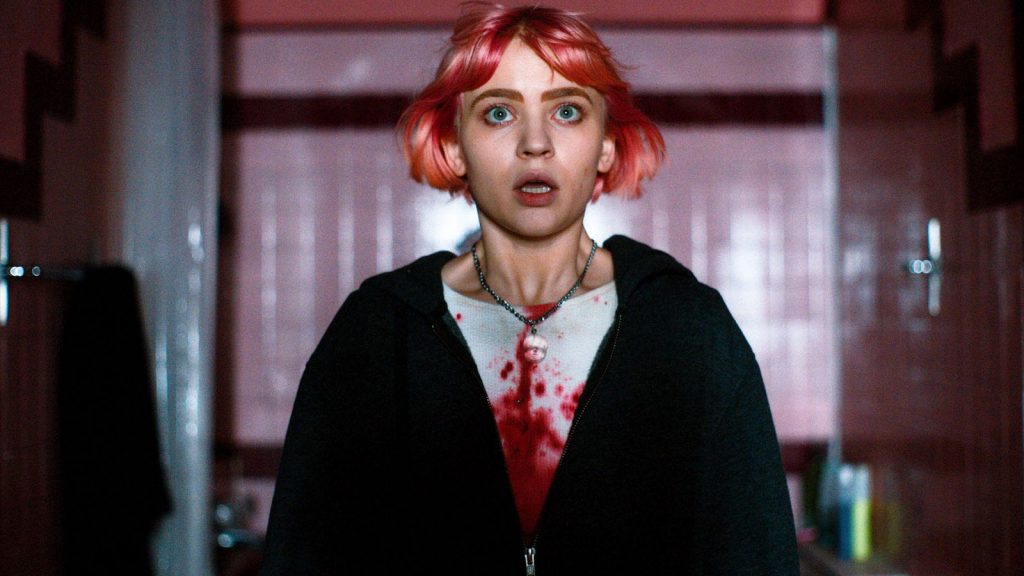
The question of possession looms over The Haunting (1963), with regards to both Hill House, the labyrinthine Victorian mansion in which most of the action takes place, and the film’s story, an adaptation of Shirley Jackson’s now-canonical 1959 Gothic The Haunting of Hill House that’s remarkably faithful in plot, if not in spirit. Where Jackson insisted her novel was a tale of the supernatural—its bewitching first paragraph describes Hill House itself as “not sane”—Nelson Gidding’s screenplay prefers ambiguity, leaving viewers uncertain as to whether the film’s disturbing events are phantasmagorical in nature or the manifestations of mental illness. Whichever interpretation you fancy, there’s an implicit suggestion that Hill House is resistant to conventional notions of ownership. Hugh Crain, the New England eccentric who erected the house, was doomed never to live in it, his first bride having died in a carriage crash as she approached it, and his second having died while falling down its stairs. Crain’s daughter lived in Hill House all her life but never left the nursery—where she died. She willed the house to her nurse, who committed suicide in its library. The woman who inherited the house from the nurse declines to live there, while the locals refrain from going anywhere near it after dark. Early in The Haunting, the dope who’s next in line to inherit Hill House regards it as a potential cash cow. By the film’s end, a series of chilling events disabuse him of his ambition. No one, it seems, can claim control over this “house that was born bad.”
Eleanor Lance (Julie Harris), newly liberated after years spent caring for her sickly mother, arrives at Hill House at the invitation of anthropologist and amateur parapsychologist John Markway (Richard Johnson). Eleanor buzzes with excitement and a feeling of belonging, but that feeling turns against her as she and her cohort witness a variety of sinister phenomena that seems directed at her. “I’m disappearing,” she thinks to herself in voiceover, “inch by inch, into this house.” Markway invites both Eleanor and Theodora (Claire Bloom) to join his investigation due to both women’s alleged proximity to the paranormal: Eleanor’s house was subject to days of raining stones when she was a child, while Theodora appears to be telepathic. The stark differences in the women’s personalities align with their susceptibility to Hill House’s dark power. Eleanor is virginal, prickly, and wildly neurotic, prone to childishly defensive, knee-jerk outbursts. Theodora, by contrast, is charismatic, worldly, and comfortable in her all-but-overt queerness. That Eleanor is the one to ultimately fall victim to Hill House’s curse speaks to the horror genre’s tendency to regard sheltered, repressed, sexually unrealized women as more vulnerable to the caprices of misfortune. (See Carrie, et al.)
Its rich psychological intricacies aside, The Haunting also endures on account of its myriad technical feats. Directed by Robert Wise and photographed by Davis Boulton, the film is full of bravura tracking shots and pans, and benefited from the calculated use of an anamorphic lens that wasn’t yet ready for use and caused dazzling distortions. The Haunting is an expertly anxiogenic work brimming with excellent performances and gorgeous black-and-white imagery, though some sections are belabored and too reliant on voiceover and scoring. The influence of Wise’s old boss and benefactor, RKO horror producer-auteur Val Lewton, is obvious—though Lewton, whose classic chillers never had a budget half the size of The Haunting’s, would have dispatched several of the film’s more protracted sequences in a fraction of the screen time. Lewton also would have infused the film with a bleak soulfulness absent from Wise’s cool, all-craft approach. The Haunting is ultimately a key player in the debate over whether horror films reach their zenith when directors are forced to work with limited resources or granted all the gizmos money can buy. 🩸

is a freelance critic and playwright.
For all the freaky poltergeist activity and vivid visions of murder to come, The Changeling (1980) dispatches its most abysmal horrors in its opening minutes, when its protagonist...
BY JOSÉ TEODORO | January 24, 2024
Four brave souls accept the offer (and sizable amounts of cash) from its new owner to spend one week at Belasco House, the “Mount Everest” of haunted houses...
BY LAURA KERN | December 26, 2024
We go to the movies to see ghosts, whether they be the likenesses of long-gone actors, objects, or edifices, or the suggestion of specters imprinted in the gloom of otherwise benign images.
BY JOSÉ TEODORO | February 2, 2023

This pre-Code offering packs a lot of story into its typically brisk running time, with several plot threads weaving together a (not always successful) tapestry of spooky and criminal doings.
READ MORE >
BY ANN OLSSON | Month 00, 2021

In what could be the fastest-resulting rape revenge movie, a drunken lout brutally forces himself on Ida, the young woman who doesn't return his affections, during a party over Labor Day.
READ MORE >
BY LAURA KERN | Month 00, 2021

Beast is a lot of movies in one package - fractured fairy tale, belated-coming-of-age story, psychological drama, regional horror film - but above all it's a calling card for its leading lady, Jessie Buckley.
READ MORE >
BY LAURA KERN | Month 00, 2021